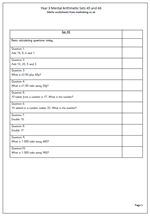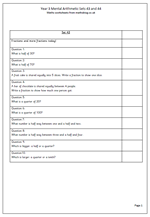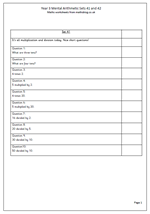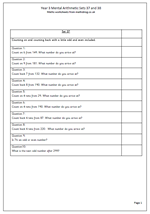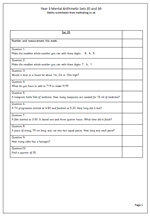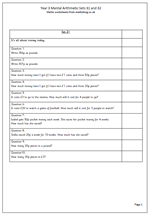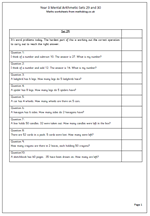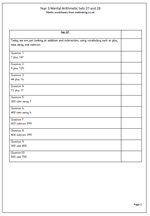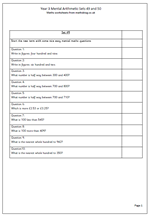 We begin the summer term’s mental arithmetic papers for year 3 with a reasonably easy set of questions. The first two questions look at writing numbers in figures. e.g. ‘write in figures: four hundred and nine. ‘ Most children should be able to do this but watch out for those who are unsure about place value and write 4009.
We begin the summer term’s mental arithmetic papers for year 3 with a reasonably easy set of questions. The first two questions look at writing numbers in figures. e.g. ‘write in figures: four hundred and nine. ‘ Most children should be able to do this but watch out for those who are unsure about place value and write 4009.
The next two questions are about finding numbers half way between two other numbers. These are not as easy as they look. There are also questions on ‘more than’ and ‘less than’ as well as a couple of rounding to the nearest whole one hundred.
These mental arithmetic pages can be used in a variety of ways. The questions can be read out without children seeing them or the sheet can be printed out for answers to be written down. If reading them they will need to be repeated at least once and time given for the answers to be worked out. It is much harder to retain information than to have it written.
